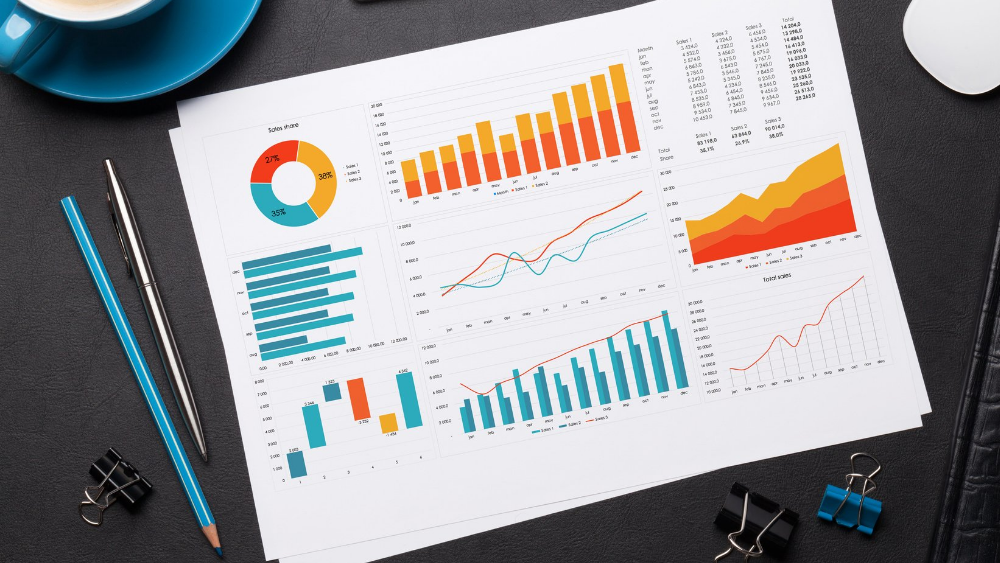Insights
INSIGHTS
All Topics
My Account
How to create bespoke reports
11 Nov 2021by Christine Chiu
Get the best out of bespoke reporting with our tips and tricks
Doing away with manual reporting is tricky when managers request different types of information. When it comes to digital tools and platforms, however, most have template reports that can be easily tweaked.
Going over how to leverage reporting across the most popular charity platforms, we check out some of the best options charity teams and give some advice for best practice.
Xero
Financial reporting and ad hoc analyses are no problem for regulator-approved software provider Xero. The platform offers two main options for outputs. Excel and PDF files are easily extracted from the financial section using the download button.
Getting into the details, bespoke reporting is easy. For most accounts, reports can be produced comparing two or more time periods. This comes in handy when teams are asked to compare performance across different debit/credit accounts, budgets, and forecasts.
Pro tip: Xero produces standard templates for balance sheet, income statement, and cash flow. Use these templates to build a basic Excel financial model.
Sage
Another FCA-approved financial software provider, Sage’s platform gives charities more power to create bespoke reports. To make a customised report, Sage users simply run saved templates or choose to create their own.
Great for larger charities, the platform can pull data from other systems to create overviews – all users need to do is filter the report.
Pro tip: Use Sage’s templates to build out more complex graphs and tables. Format the font and images to reflect your charity’s branding and design.
Trello
The Kanban style project management platform works well for brainstorming sessions and keeping track of to-dos. When it comes to reporting, however, charity digital leaders may want to track progress.
To get there, Trello has a built-in reporting dashboard. Managers can produce bar, graph, and line charts representing progress in project areas.
Pro tip: Trello has pre-set templates for activities. The project management dashboard already keeps track of cards per list, per member, per label and by due date.
Asana
Asana’s project management platform is more sophisticated than Trello’s activity card boards, and so captures more information.
When it comes to reporting, the platform tracks both projects and staff. Using the ‘advanced search’ function, managers get a good sense of the tasks outstanding by filtering the results. The powerful search function makes it easy to assess, edit, and reassign activities.
Pro tip: With staff tracking, make the best of your time. Using the digital dashboard, see who is working on what and allocate items to those with fewer tasks.
Slack
Similar to other digital communication tools, Slack’s analytics helps make sense out of team interactions. Access to reporting is under three tiers, based on the subscription type. For charities on a small budget, there are free options.
Exporting team usage reports into Excel lets you see how the team is using Slack. Metrics like the number of messages, reactions, active devices, uploaded files, and more can give an indication of how digital collaboration works for your charity.
Pro tip: Use the activity reports to evaluate whether or not it’s a good idea to upgrade to paid services.
Teams
Microsoft Teams is already the favourite among many charities. With so many team members on the operational platform, it’s important for charity managers to get a handle on how time is spent on work.
Team usage and activity reports are indicators for digital collaboration. These outputs tell managers how active teams are across a time period. The data could be used to gauge burn out or for determining how to use office space more effectively.
Pro tip: Downloading the data into Excel means you can manipulate the data however you like. Create insightful graphics using the number of meetings held across a time period to show how hybrid working is progressing.
Dropbox
Remote and hybrid working means changes for managers tracking resources. Finding out how much storage is remaining, how many devices are active, and what folders teams are using helps charities assess their cloud usage.
For those with administrator access, team activity reports can be produced. These types of reports could help managers avoid employee burn out.
Pro tip: Administrators can also use their privileges to recover accidentally deleted files.
Salesforce
Salesforce’s platform was one of the first to focus on sales and customer analytics.
For charities, the CRM platform has the power to create template reports in detail. Use reports to gain insight into all audience segments, including donors, volunteers, and staff.
Salesforce has a huge number of templates to choose from, making it unlikely that you’ll need anything custom built. Reporting also works for charities on Salesforce’s donor and grant tracking platforms.
Pro tip: For charities who haven’t analysed their audiences, use the reporting function to find out more about your supporters. These types of reports help charities evidence what’s going well and what isn’t.
More on this topic
Recommended Products
Our Events
Charity Digital Academy
Our courses aim, in just three hours, to enhance soft skills and hard skills, boost your knowledge of finance and artificial intelligence, and supercharge your digital capabilities. Check out some of the incredible options by clicking here.















